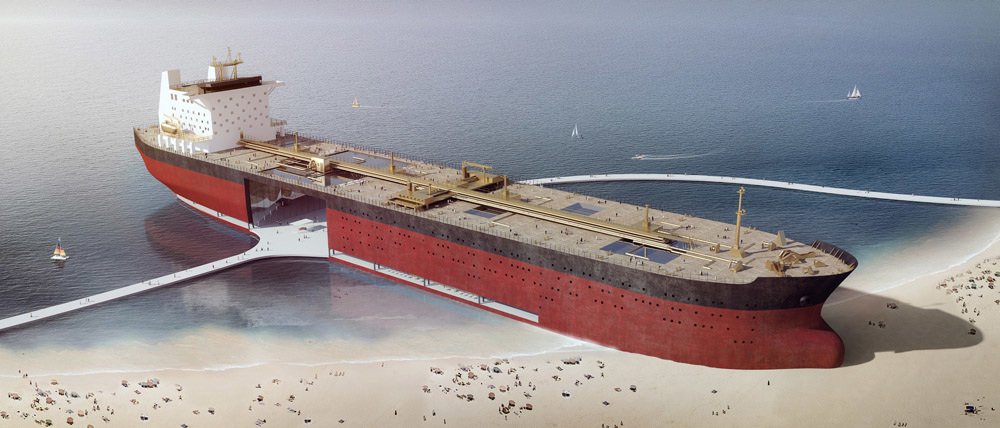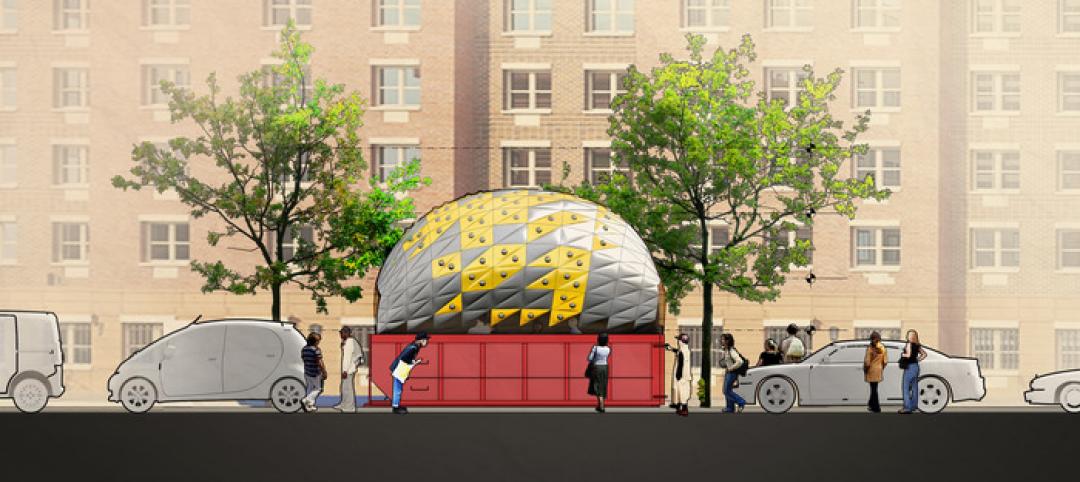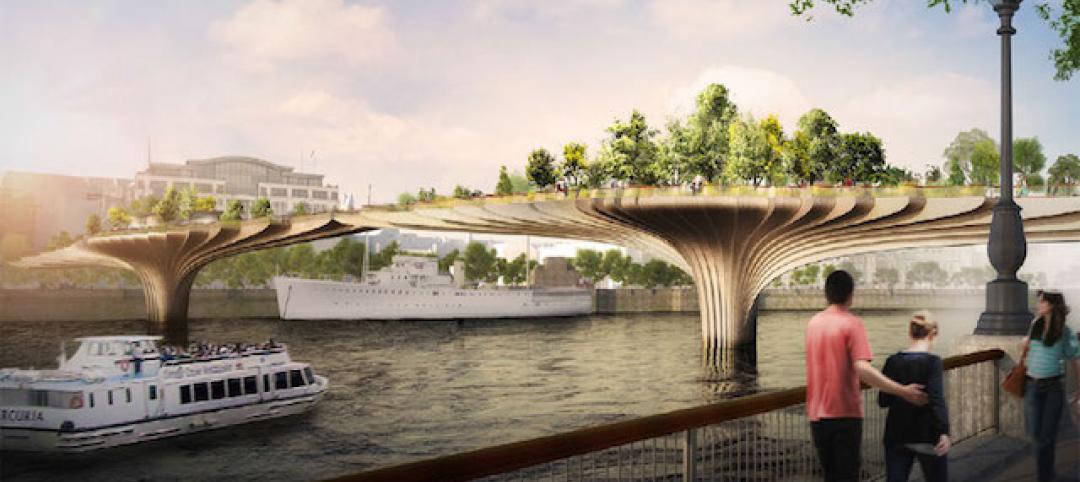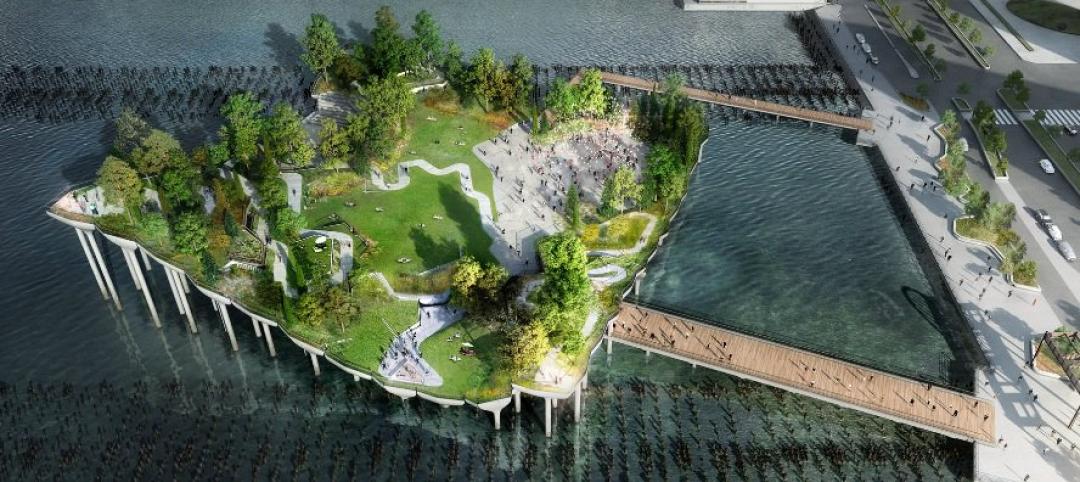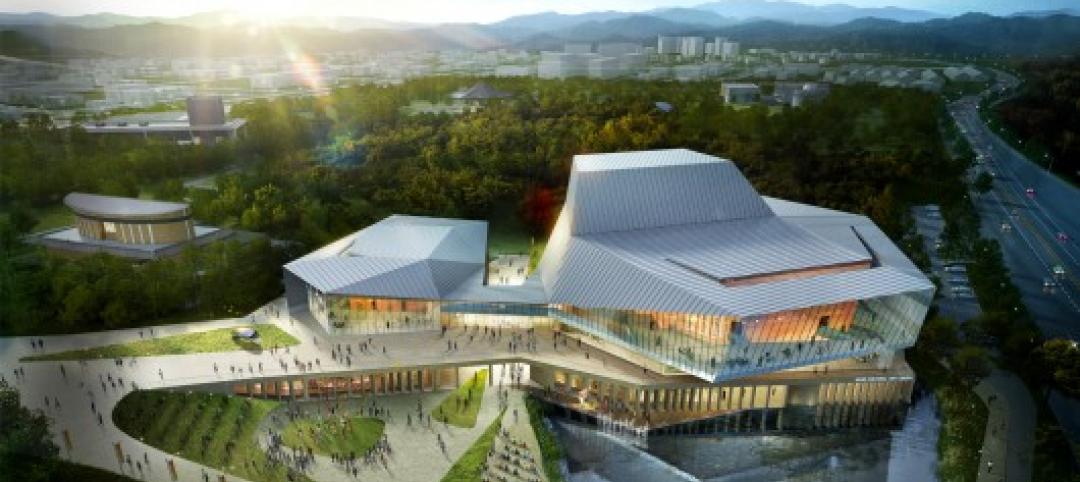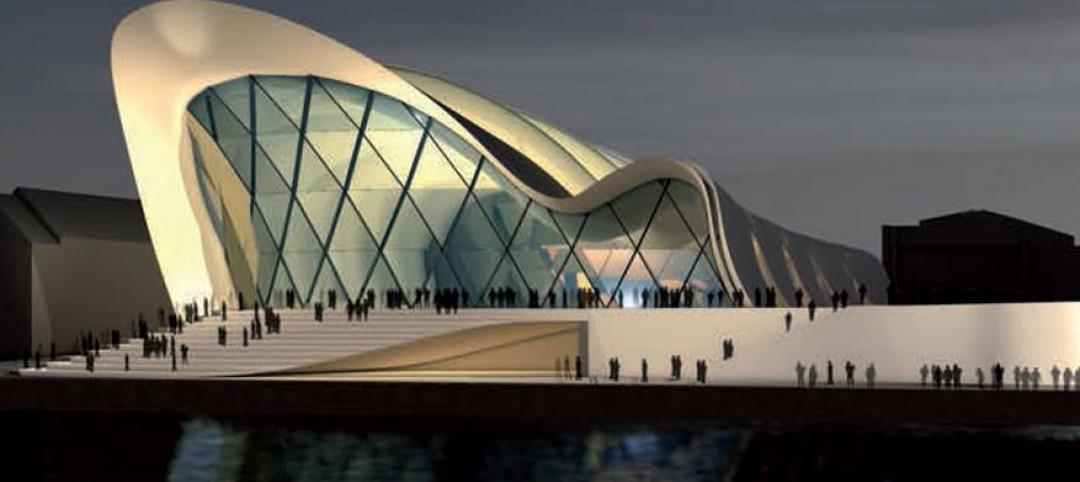Let’s say renewable energy from wind and solar become the new norm, what do we do with the gigantic tankers that ship oil around the world? A group of Dutch artists imagined reusing these behemoths as space usable by the public.
The Black Gold Project is a joint project of artists Chris Collaris Design, Ruben Esser, Sander Bakker, and Patrick van der Gronde, Weburbanist reports.
Based on renderings, the project involves anchoring tankers to the shore as permanent land buildings, designed to accommodate cultural and event spaces, retail, or public parks. In the words of Art Director Ruben Esser, “The Black Gold Project is an answer to the contemporary search for true iconic buildings in the Southern Gulf region.”
“The biggest concern in the newly grounded architectural culture of the post-global cities in the Gulf area can be described as an overdose of pretentious iconic buildings,” designer Chris Collaris contends. “By changing the function of the discarded mega oil tanker in a sustainable and functional way, the anchored mega ship can be kept as a true icon of the Arabic States in Southern Gulf region into the present and next era.”
Weburbanist points out several practical drawbacks to be considered, such as the impact of waves, saltwater, and wind over time. “Still, as a conceptual project, the idea is compelling—if more poetic than realistic,” the article states. “Turn the very vessels responsible for the rise and fall of these oil-producing nations into something new that remains, at the same time, a monument to days gone by."
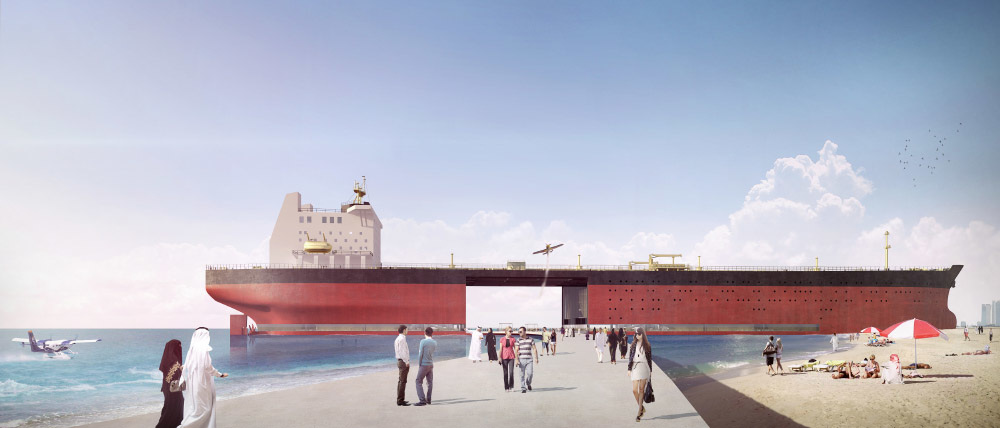
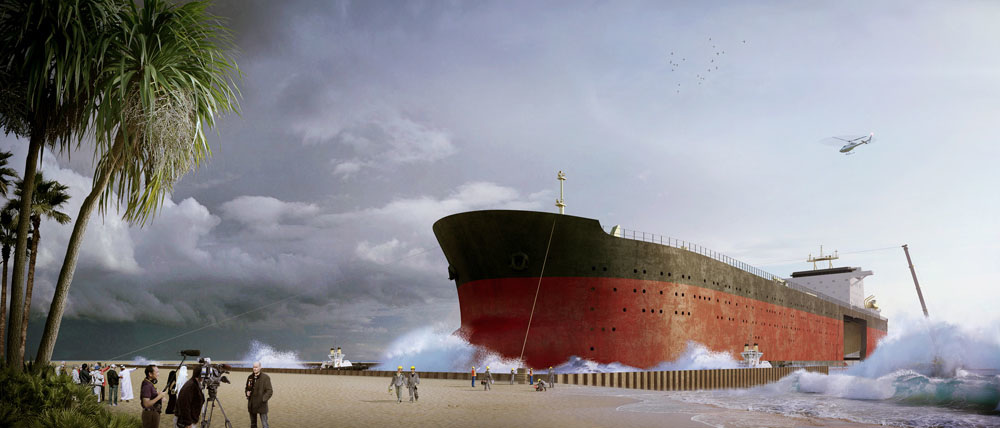

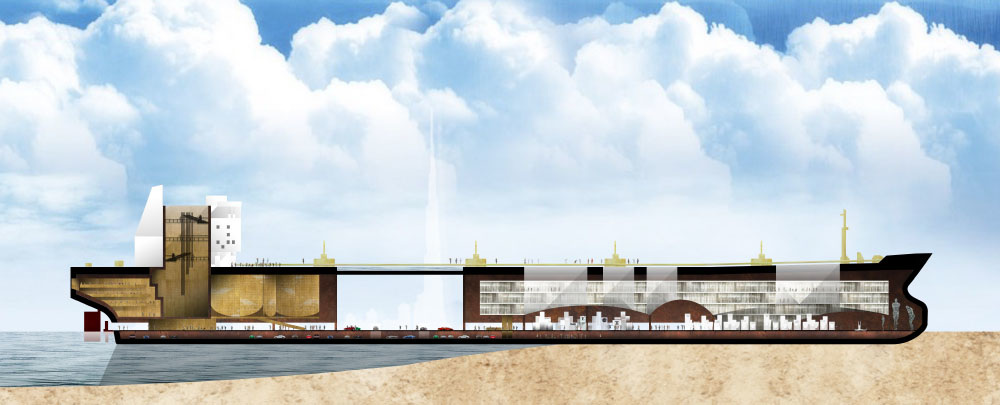
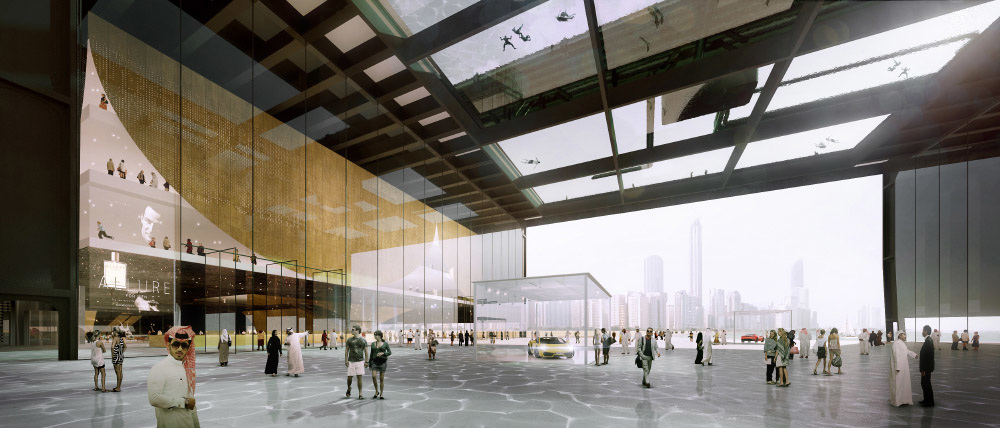
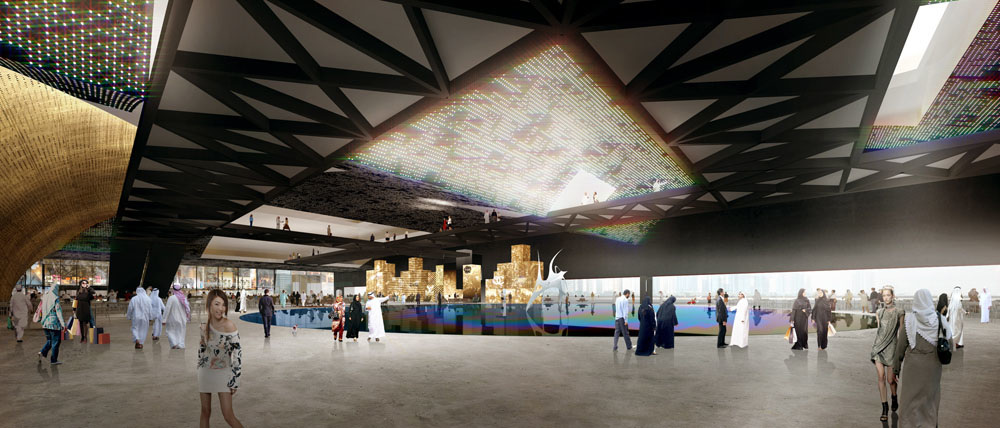
Related Stories
| Dec 5, 2014
Must see: Dumpster becomes a public space in art installation
Dumpsters tend to be seen as necessary evils of city life, but John H. Locke and Joaquin Reyes wanted New York City's residents to think about them in a different way.
| Dec 4, 2014
£175 million 'Garden Bridge' gets the green light to cross the Thames
Westminster Council has approved a £175 million 'Garden Bridge' that will allow pedestrian traffic only. There has been some controversy about this bridge, which is expected to attract seven million visitors annually.
| Nov 25, 2014
Behnisch Architekten unveils design for energy-positive building in Boston
The multi-use building for Artists For Humanity that is slated to be the largest energy positive commercial building in New England.
| Nov 18, 2014
Fan of the High Line? Check out NYC's next public park plan (hint: it floats)
Backed by billionaire Barry Diller, the $170 million "floating park" is planned for the Hudson River, and will contain wooded areas and three performance venues.
| Nov 17, 2014
'Folded facade' proposal wins cultural arts center competition in South Korea
The winning scheme by Seoul-based Designcamp Moonpark features a dramatic folded facade that takes visual cues from the landscape.
| Nov 14, 2014
Bjarke Ingels unveils master plan for Smithsonian's south mall campus
The centerpiece of the proposed plan is the revitalization of the iconic Smithsonian castle.
| Nov 12, 2014
Chesapeake Bay Foundation completes uber-green Brock Environmental Center, targets Living Building certification
More than a decade after opening its groundbreaking Philip Merrill Environmental Center, the group is back at it with a structure designed to be net-zero water, net-zero energy, and net-zero waste.
| Nov 12, 2014
Designs by three finalists for new Beethoven concert hall unveiled
David Chipperfield and Valentiny are among the finalists for a new concert hall being built to commemorate Beethoven’s 250th birthday in his hometown of Bonn, Germany.
| Nov 7, 2014
NORD Architects releases renderings for Marine Education Center in Sweden
The education center will be set in a landscape that includes small ponds and plantings intended to mimic an assortment of marine ecologies and create “an engaging learning landscape” for visitors to experience nature hands-on.


